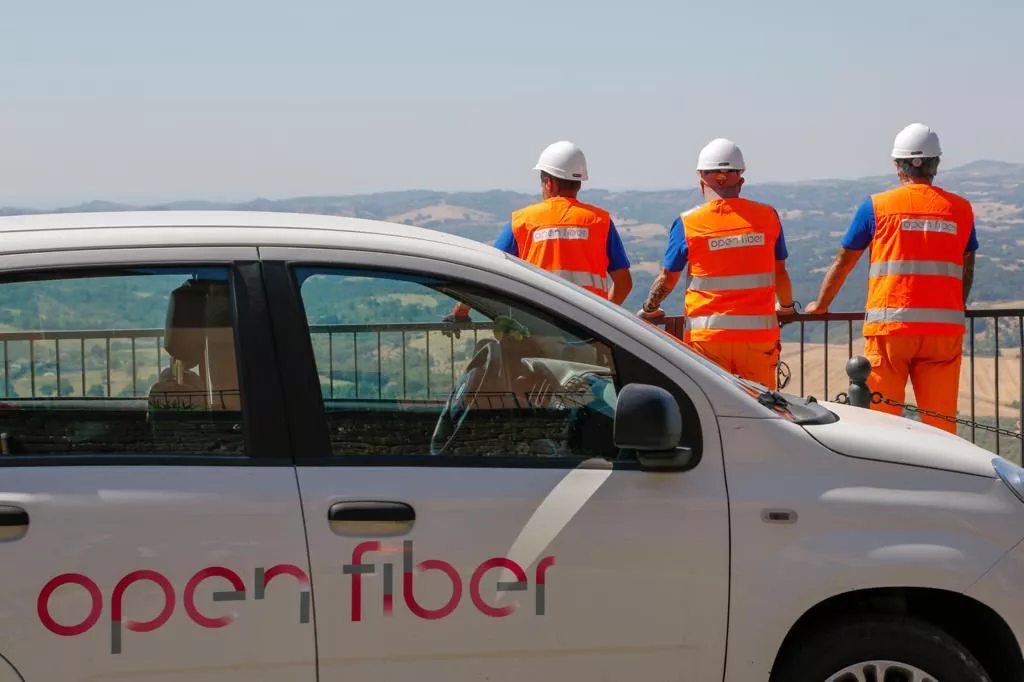At the end of July 2021, the Interministerial Committee for the Digital Transition had approved the 1 Giga Europe plana project that aims to bring connectivity capable of ensuring at least 1 Gbps of bandwidth in all areas of our country where no network capable of providing download speeds of at least 300 Mbps is present, nor will it be within the next five years.
We are talking about public investments which, drawing on PNRR funds, provide for the adaptation of the networks available in the gray and black areas. As we saw in the article in which we presented the 1 Giga Europe Plan, the winning operators of the call for coverage they are Open Fiber and FiberCop.
Checking the site statistics “Connect Europe“ as of March 31, 2024, the percentage of connected civics is still lower (17%) than the 25% objective set, as part of the Europe 1 Giga Plan, by 31 December 2023.
The idea of ”adjacent buildings” to save the Europe 1 Giga Plan
With the conversion into law of the PNRR decree, the amendment has just been approved which allows Open Fiber and FiberCop to achieve with fiber optic connection house numbers close to those which are, in practice, difficult to cover. This is what emerges from reading the text of the law, which you can consult at this address (page 21).
In order to reduce the country’s digital divide through the creation of ultra-fast networks and to guarantee the timely and effective implementation of the investments envisaged by the “1 Giga Europe” Plan (…), taking into account the outcome of the preparatory checks for the execution of the works and for the purpose of covering homogeneous areas in each lot, the beneficiaries of the public contributions fulfill the obligations established by the agreements in force with the company Infratel Europe SpA by also connecting the house numbers located in proximity and having the same characteristics as those to be connect on the basis of the same agreements, identified following the aforementioned checks, without prejudice to the final deadline for the execution of the work, the total number of house numbers to be connected, including the number of those located in remote areas (…) and the overall cost of the investment assumed by the beneficiaries following the tender procedure. The house numbers connected pursuant to the first period are calculated for the purposes of reaching the total number of connections to be made based on the agreements in force with the company Infratel Europe SpA
Translated, the winners of the tenders for the 1 Giga Europe Plan complained about obvious discrepancies between what was initially expected and what was found “in the field”. In other words, some house numbers they result non-existent or in fact unattainable with the fiber cable. For this reason, it is deemed appropriate to accept these complaints and allow the coverage of “house numbers located nearby“.
The coverage results achieved to date by Open Fiber and FiberCop contribute to the calculation of the overall number of connections to be made based on the initial agreements. However, from now on a “second period” opens: within 60 days from the date of entry into force of the law, Infratel will define – in agreement with Open Fiber and FiberCop – the “method of identifying, for each lot, the house numbers located in proximity and having the same characteristics as those to be connected“.
Reading the text of the legislation, it therefore seems that in cases where it is economically unsustainable – for the companies winning the tenders for the various lots – to reach, for example, scattered house numbers or this is not feasible (for example due to incorrect house numbers), the concessionaires (i.e. Open Fiber and FiberCop) will be able to stop earlier, bringing connectivity to numbers that are “close” to those originally listed.
Who will bear the costs to cover the scattered numbers?
While it is true that bringing FTTH (Fiber-to-the-Home) connectivity with a fiber optic cable to potential hard-to-reach users is no mean feat. Even in the gray areasIn fact, where a single operator is today able to bring connectivity to the customer, there are situations in which the real estate units to be reached are, for various reasons, objectively very complex to wire.
Offer the opportunity to limit FTTH coverage to adjacent streets it could be a useful tool to redistribute costs a little, so that the last step to reach the “scattered customer” is not carried out by the concessionaire at this stage but, possibly, by another entity at a later date.
The fear, however, is that with this mode of operationthis could exacerbate the problem even further digital divide, precisely that phenomenon that the 1 Giga Europe Plan intended to overcome. This is somewhat the thesis of the Europen Internet Providers Association (AIIP) who announced a battle in Europe.
The phrase “without prejudice to (…) the total number of house numbers to be connected“. By limiting the volume of numbers to be covered to those located “in proximity”, doesn’t this automatically reduce the total volume of numbers to be reached? We will know more soon.
The opening image is from Open Fiber.

